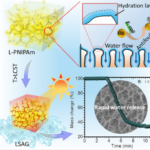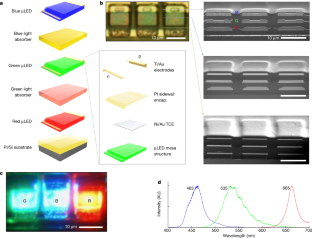- 社会科学者と合成生物学者との共同研究により、地球規模の課題に取り組む
Social scientist and synthetic biologist collaborate to tackle a global challenge
- ケニア農村部におけるPOS(ポイント・オブ・ユース)フッ化物バイオセンサーの精度と使いやすさ The accuracy and usability of point-of-use fluoride biosensors in rural Kenya
- 2020-21年における低所得国および中所得国の水不足経験における国別、人口動態別、社会経済的格差の推定:国別代表調査データを用いた横断的観察研究 Estimating national, demographic, and socioeconomic disparities in water insecurity experiences in low-income and middle-income countries in 2020–21: a cross-sectional, observational study using nationally representative survey data
社会科学者と合成生物学者との共同研究により、地球規模の課題に取り組む Social scientist and synthetic biologist collaborate to tackle a global challenge
2023-02-08 ノースウェスタン大学
◆ノースウェスタン大学で開発された新しいバイオセンサー装置は、ケニアの農村部で実地試験を行い、フッ化物の水質検査が研究室以外でも簡単に行え、専門家でなくても正確に解釈できることを証明しました。
◆無色、無臭、無味の天然フッ化物で汚染された水源に住む人々は、世界中で数千万人にのぼると推定されています。この問題の規模は、利用可能な検査方法が高価であったり、複雑であったりするため、測定することが困難でした。
◆この検査方法は、人類学と合成生物学の研究者が共同で開発したもので、安全な飲料水へのアクセスをめぐる世界的な健康問題に対処するための大きな一歩となります。
◆この研究は、ノースウェスタン大学の人類学者セラ・ヤングと合成生物学者ジュリアス・ルクスが共同で行いました。ヤングの研究に触発され、ルックスと彼の研究室は、微生物が汚染物質の存在を感知するために使用する分子である天然由来のバイオセンサーの研究を始めた。2020年には、無細胞合成生物学システムでバイオセンサーを再利用し、フッ化物などの有害な水質汚染物質を現場で検出できるようにした研究を発表し、この技術プラットフォームをROSALIND(RNA Output Sensors Activated by Ligand Induction)と名づけた。
◆世界の水の安全保障を向上させるというヤングの研究をさらに進めるため、Lucks LabのROSALIND技術の最新版では、有害なレベルのフッ素が安全上懸念される場所に簡単に持ち運べるよう、装置の速度と使いやすさを向上させました。
◆研究チームは、ケニア農村部の36世帯から57の水サンプルを採取し、フッ化物濃度の測定精度をゴールドスタンダードのフッ化物光度計と比較して評価しました。また、この技術が世界の水危機の解決に有意義な影響を与えることができる重要な指標である、専門家ではないユーザーでも検査結果を容易に解釈できるかどうかを検証するために、研究を計画しました。
◆その結果、世界保健機関(WHO)の基準値である1.5ppm以上のフッ化物濃度を84%の確率で正確に予測することができました。また、57回のテストのうち、ユーザーと科学者チームの間で解釈の相違があったのは1回だけで、非常に有用なテストであることがわかりました。
◆このフッ化物検査の次のステップとしては、地質学的フッ化物の世界的な分布の特定が考えられます。
◆ヤングとラックスは、シカゴに近いところで、水中の鉛を迅速に検出する家庭用検査の有用性を調査し、この研究を社会科学と合成生物学の融合モデルとして活用し、合成生物学のイノベーションの影響力を高めることに関心を持っています。
◆本研究は、2023年2月8日、Nature Partner Journals Clean Waterに掲載されました。
<関連情報>
- https://news.northwestern.edu/stories/2023/02/biosensors-change-the-way-water-contamination-is-detected/
- https://www.nature.com/articles/s41545-023-00221-5.
- https://www.thelancet.com/journals/lanplh/article/PIIS2542-5196(22)00241-8/fulltext
ケニア農村部におけるPOS(ポイント・オブ・ユース)フッ化物バイオセンサーの精度と使いやすさ The accuracy and usability of point-of-use fluoride biosensors in rural Kenya
Walter Thavarajah,Patrick Mbullo Owuor,Diana Ross Awuor,Karlmax Kiprotich,Rahul Aggarwal,Julius B. Lucks & Sera L. Young
Nature Partner Journals Clean Water Published:08 February 2023
DOI:https://doi.org/10.1038/s41545-023-00221-5

Abstract
Geogenic fluoride contaminates the water of tens of millions of people. However, many are unaware of the fluoride content due in part to shortcomings of detection methods. Biosensor tests are a relatively new approach to water quality testing that address many of these shortcomings but have never been tested by non-experts in a “real-world” setting. We therefore sought to assess the accuracy and usability of a point-of-use fluoride biosensor using surveys and field tests in Nakuru County, Kenya. Biosensor tests accurately classified elevated fluoride (≥1.5 ppm) in 89.5% of the 57 samples tested. Usability was also high; all participants were able to use the test and correctly interpreted all but one sample. These data suggest that biosensor tests can provide accurate, meaningful water quality data that help non-experts make decisions about the water they consume. Further scaling of these technologies could provide new approaches to track global progress towards Sustainable Development Goal 6.
2020-21年における低所得国および中所得国の水不足経験における国別、人口動態別、社会経済的格差の推定:国別代表調査データを用いた横断的観察研究 Estimating national, demographic, and socioeconomic disparities in water insecurity experiences in low-income and middle-income countries in 2020–21: a cross-sectional, observational study using nationally representative survey data
Sera L Young, Hilary J Bethancourt, Zacchary R Ritter, Edward A Frongillo,
Lancet Planetary Health Published:November, 2022
DOI:https://doi.org/10.1016/S2542-5196(22)00241-8

Summary
Background
We are facing a global water crisis. However, because most water indicators assess physical availability or infrastructure in aggregate, knowing which sociodemographic groups experience water insecurity is difficult. We aimed to assess the prevalence of water insecurity across low-income and middle-income countries (LMICs) and examine how it varies by sociodemographic characteristics and exposure to life disruptions due to the COVID-19 pandemic across and within countries.
Methods
In this observational study, we used Individual Water Insecurity Experiences (IWISE) scale data from a cross-sectional, nationally representative sample of individuals aged 15 years and older (defined as adults) in 31 LMICs. The IWISE scale range is 0–36, and water insecurity was defined as a score of 12 or higher. We used multivariable linear regression models to assess how individual-level experiences with water insecurity related to sociodemographic characteristics in each country, region, and the pooled sample.
Findings
45 555 individuals from 31 LMICs completed the IWISE module between Sept 4, 2020, and Feb 24, 2021, and were included in the 2020 Gallup World Poll (GWP) database; 45 365 individuals had sufficient data to estimate the prevalence of water insecurity. 42 918 individuals from 30 LMICs had sufficient data to assess sociodemographic characteristics associated with water insecurity, and 39 161 individuals in 29 countries had sufficient data to assess how IWISE scale scores covaried with life disruptions due to the COVID-19 pandemic. The overall prevalence of water insecurity in 2020 was 14·2%, ranging by region from 36·1% in the sub-Saharan Africa region to 9·1% in the Asia region, and by country from 63·9% in Cameroon to 3·6% in China. In the pooled model including sociodemographic and COVID-19 factors, difficulty getting by on household income (vs no difficulty getting by: β 2·76 [95% CI 2·45–3·07]), living in the outskirts of a city (vs living in a large city: 0·85 [0·29–1·41]), and being greatly affected by the COVID-19 pandemic (vs not being affected: 2·36 [1·96–2·77]) were strongly associated with higher IWISE scores. In country and regional models, the sociodemographic factors most consistently associated with higher IWISE scores were difficulty getting by on household income and life disruptions due to the COVID-19 pandemic, but the strength of these associations varied across countries and regions.
Interpretation
Through extrapolation of these nationally representative data, we estimate that hundreds of millions of people had life-altering experiences with water insecurity globally in 2020, and that their sociodemographic characteristics vary by country and region. Additional individual-level measurements globally could help pinpoint the characteristics of those who are most water insecure, thereby guiding the development of context-specific policy and interventions that will best serve those most affected.
Funding
Carnegie Corporation, Northwestern University, and USAID



